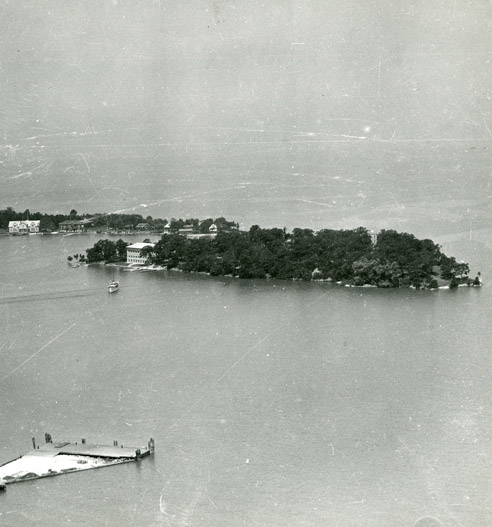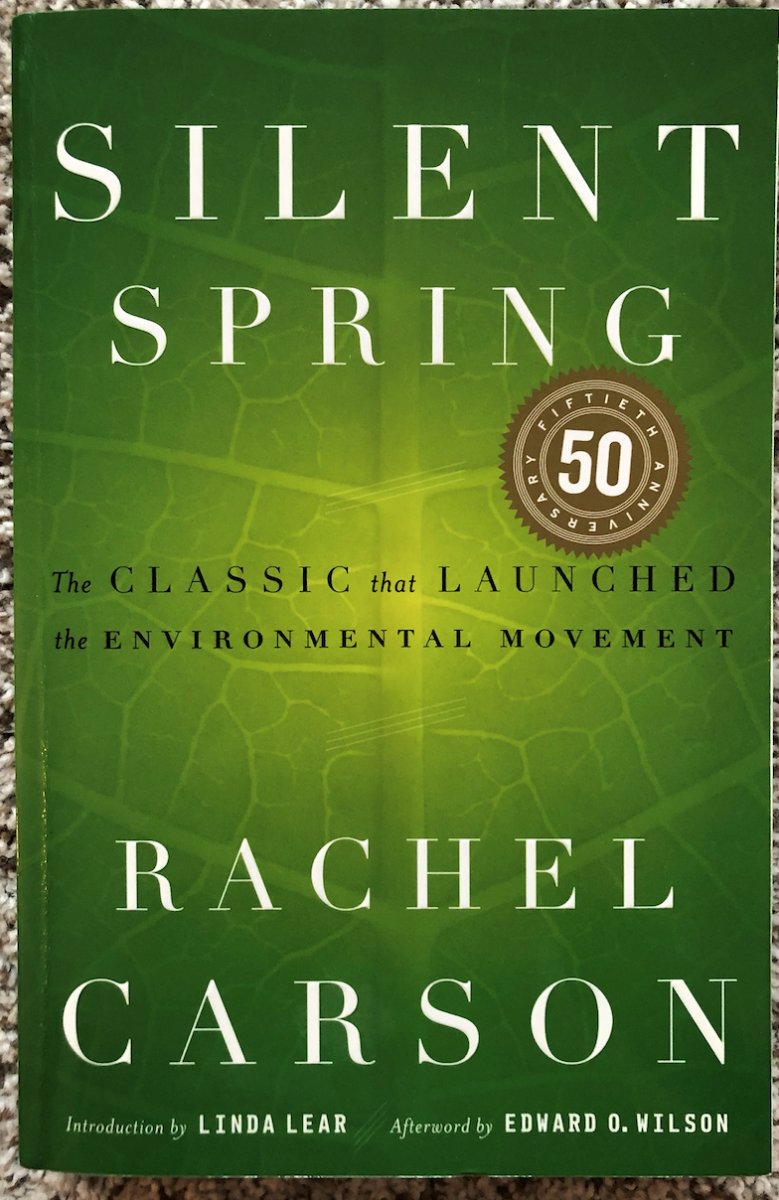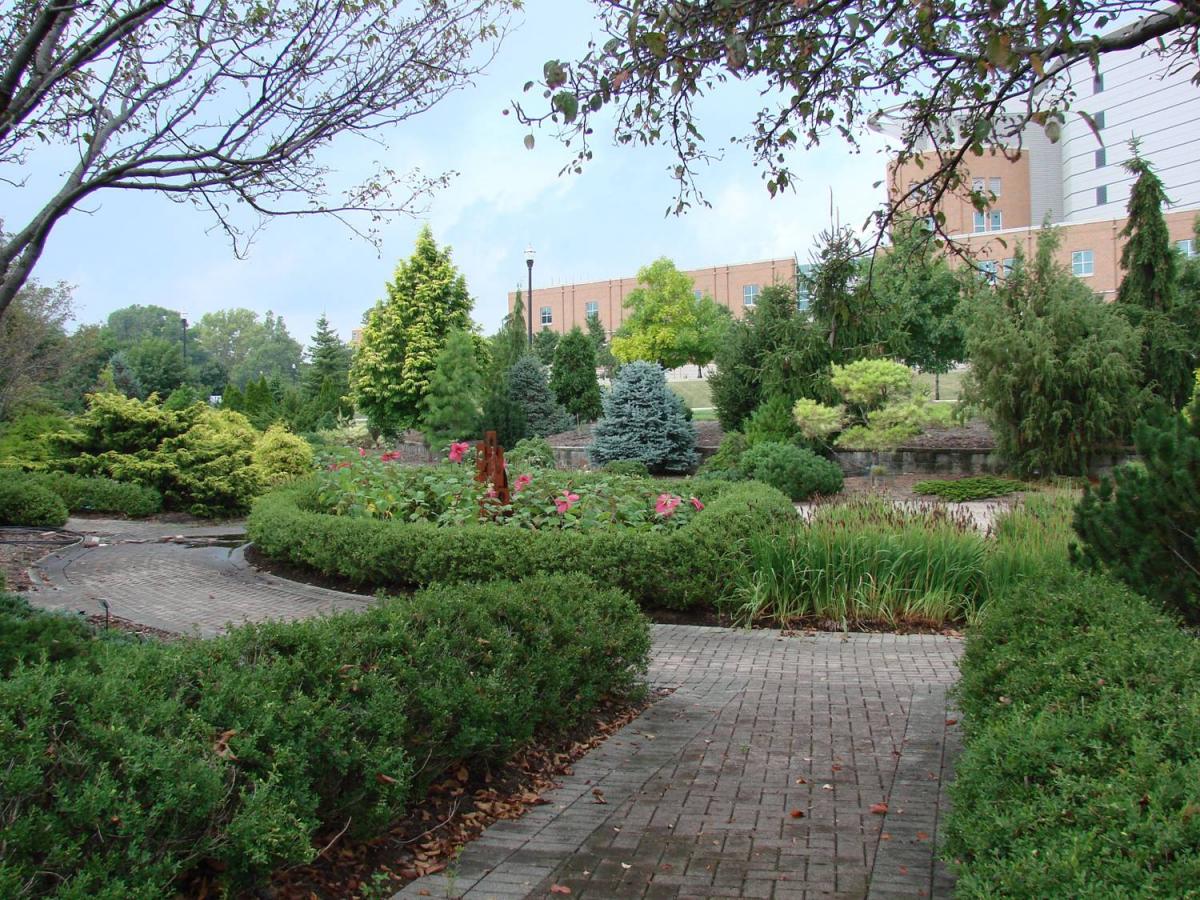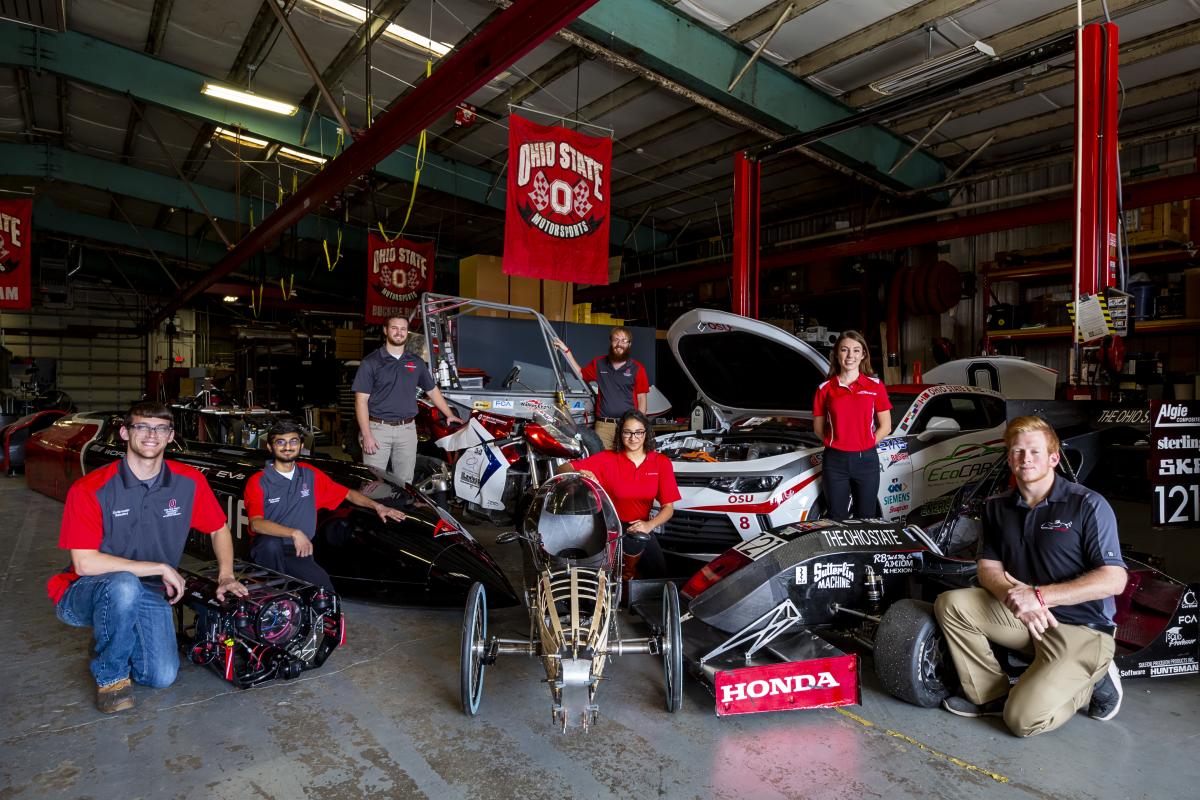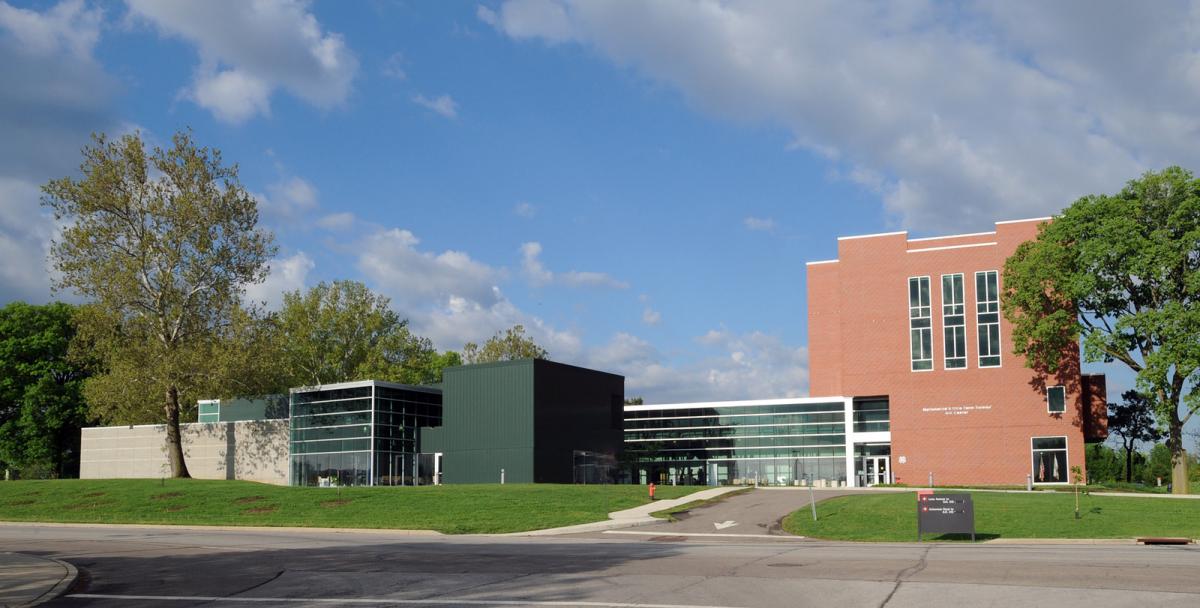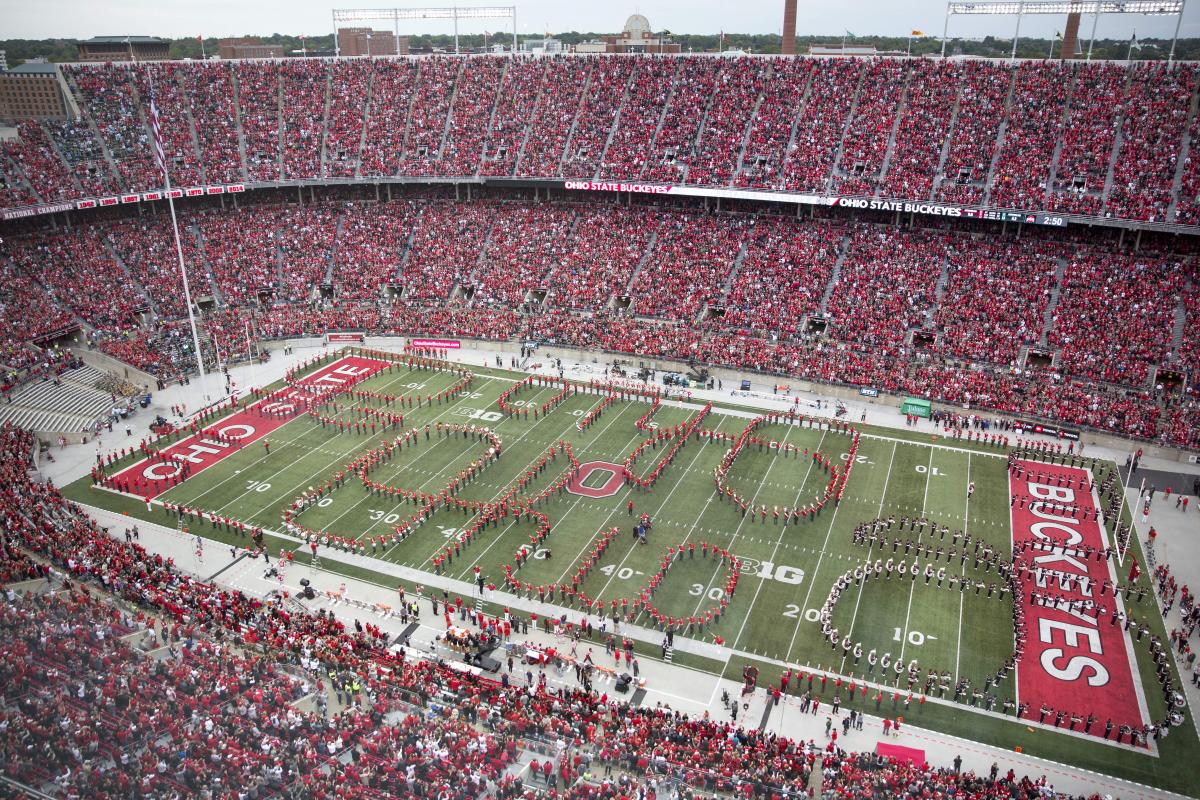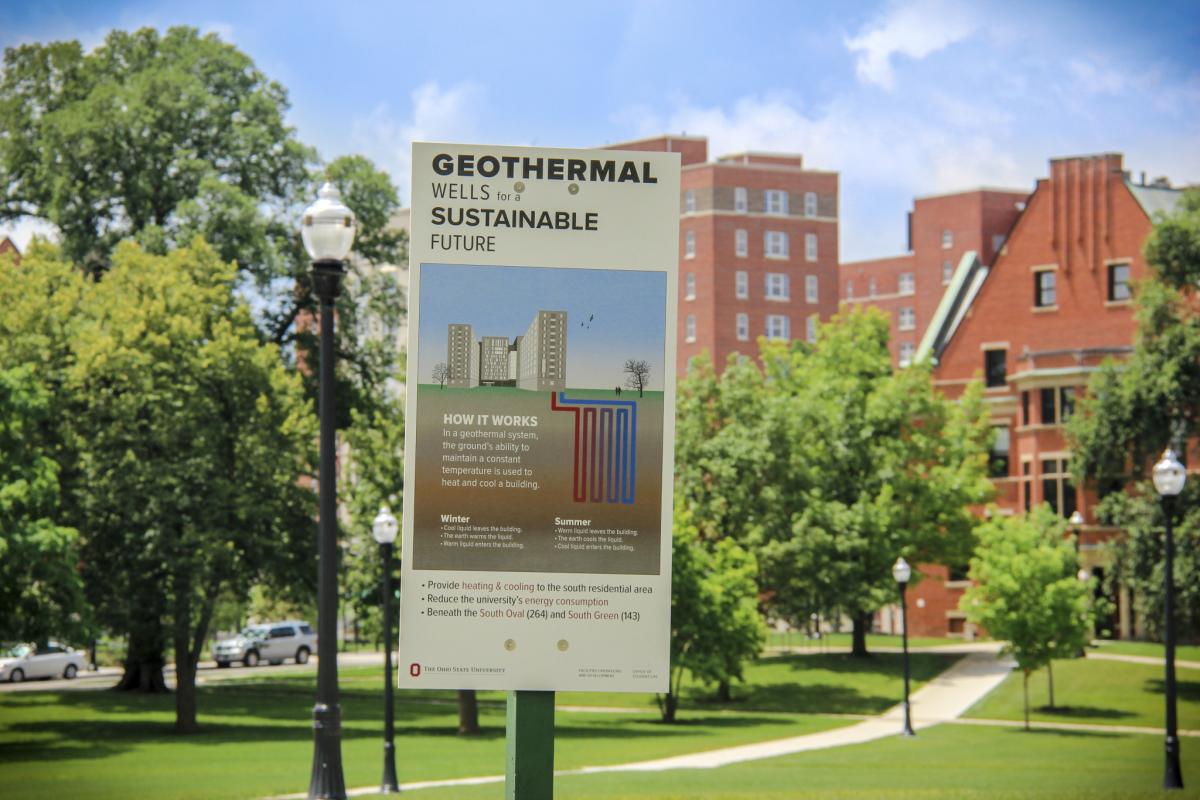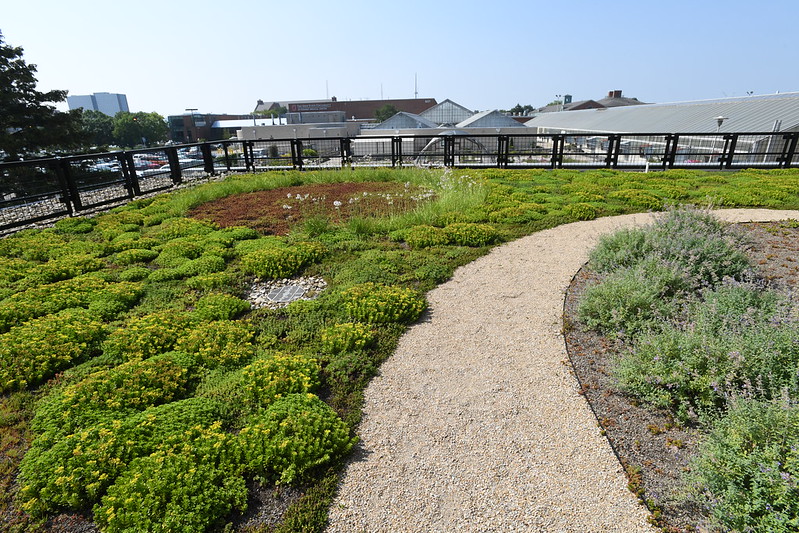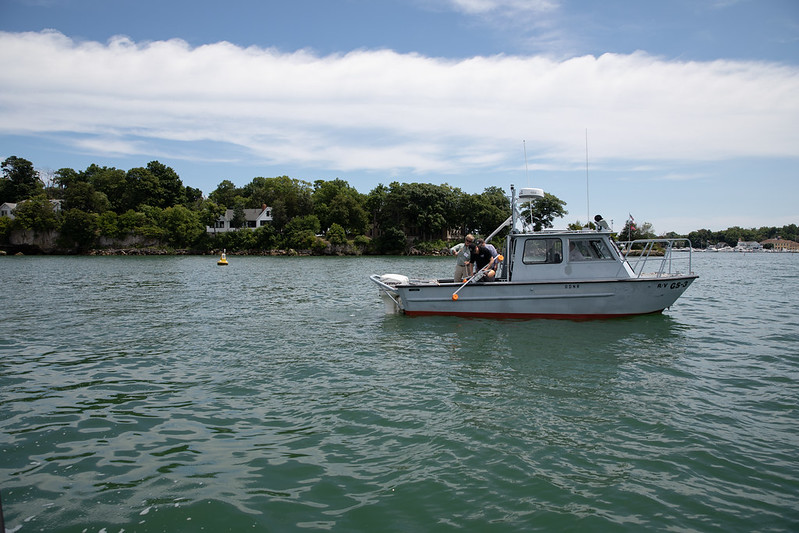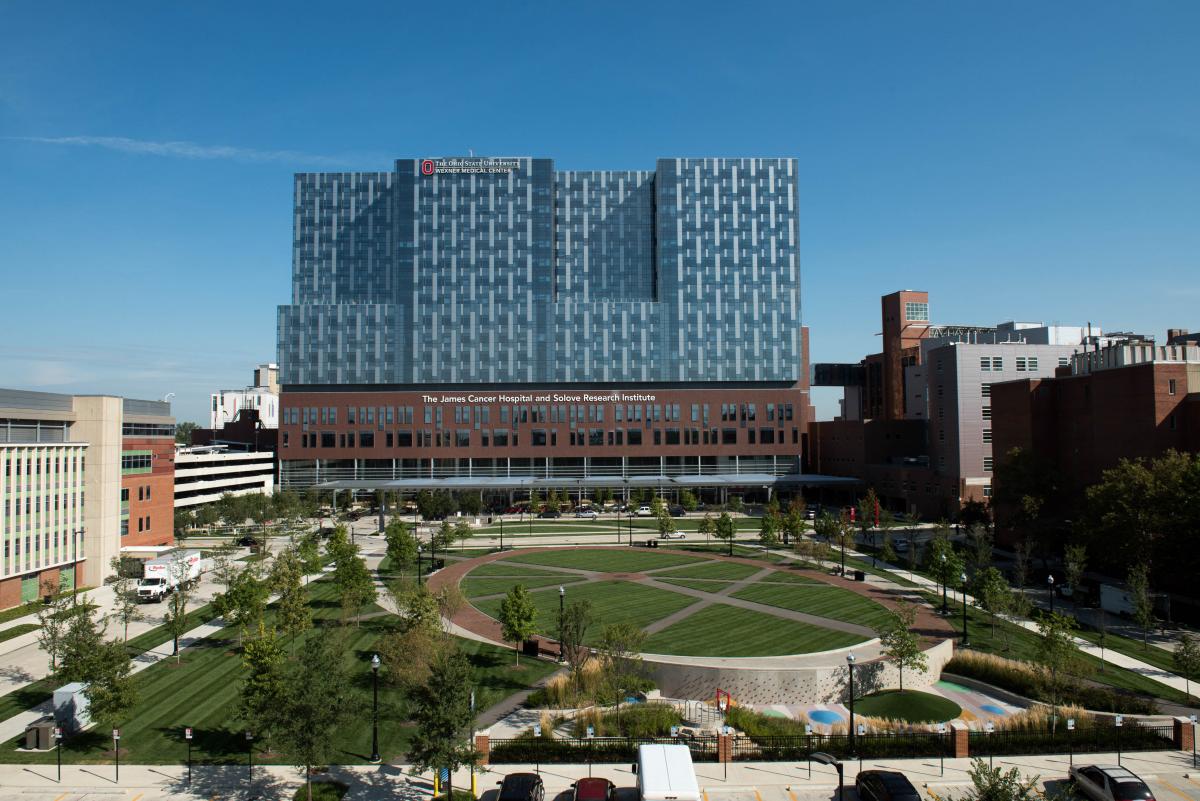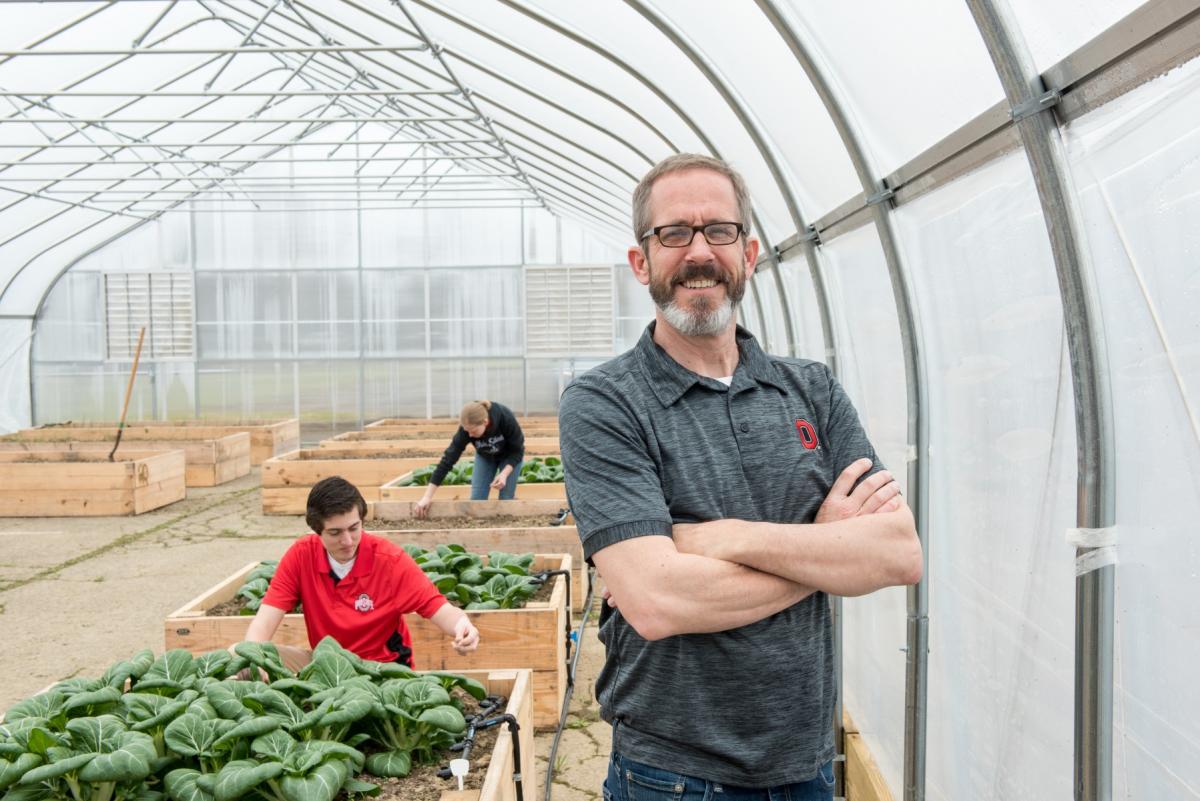Established in 1970, Earth Day has become a worldwide holiday celebrated by over 1 billion people in more than 190 countries. As we celebrate the 50th anniversary of Earth Day, we look at the history of national and Ohio State environmental successes.
|
1870 |
The Ohio State University was founded as a land-grant university in accordance with the Morrill Act of 1862 under the name Ohio Agricultural and Mechanical College. |
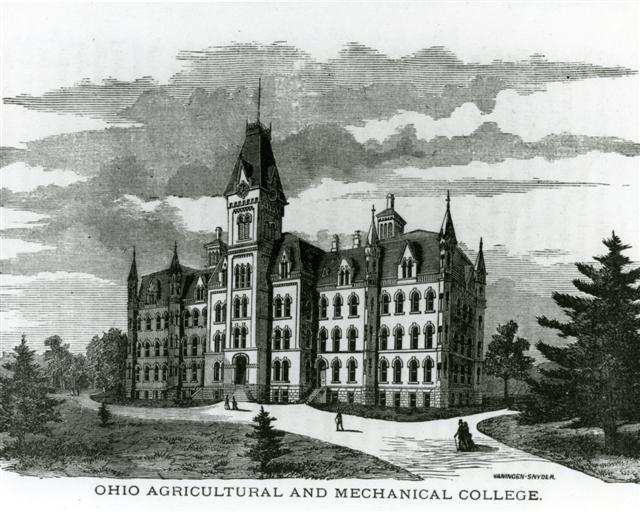 |
|
1875 |
N.S. Townsend taught a forestry course at Ohio State. |
|
|
1881 |
Department of Botany and Forestry established at Ohio State. |
|
|
1909 |
Edmund Secrest, sent from the U.S. Bureau of Forestry, established the 85-acre Secrest Arboretum at Agricultural Experiment State in Wooster. |
|
|
1912 |
Proposed by the Ohio Academy of Science, the Ohio Biological Survey was initiated and placed at Ohio State (see Museum of Biological Diversity today). |
|
|
1925 |
Julius Stone presented Gibraltar Island to Ohio State as a permanent home for Lake Laboratory, which was previously established in 1895 for biology research of the lake region. |
|
|
1949 |
The Ohio Water Resources Center was established in 1959 to conduct research on water and wastewater treatment processes. |
|
|
1960 |
The original Institute of Polar Studies, now the Byrd Polar and Climate Research Center, was created to support scientific research, develop investigations and make the results of polar studies conducted at Ohio State available to scientists and the public. |
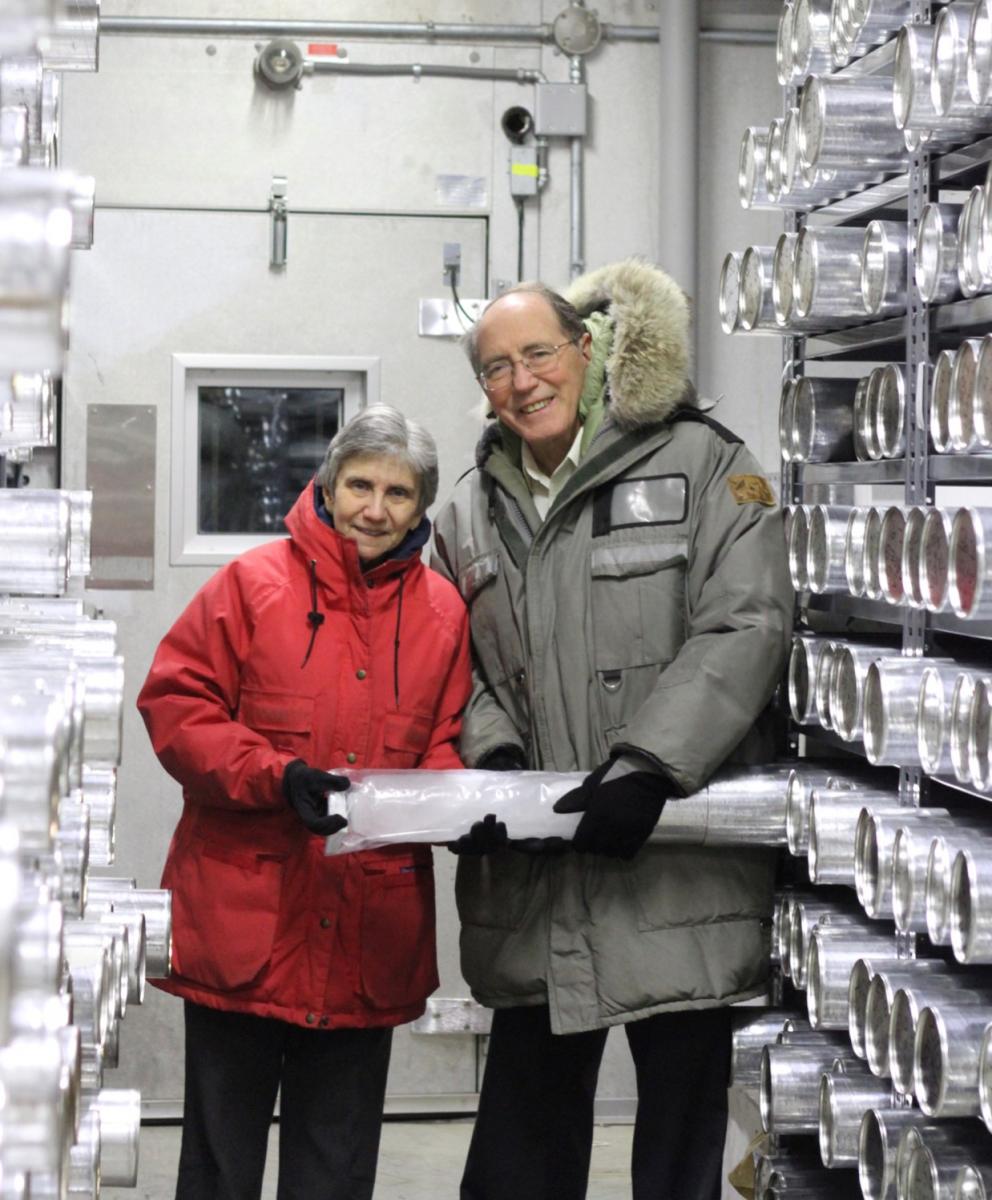 |
|
1962 |
Rachel Carson’s New York Times bestseller “Silent Spring” raised public awareness and concern for living organisms, the environment and links between pollution and public health. |
|
|
1968 |
The School of Natural Resources began operation and in 2005 was renamed to School Environment and Natural Resources. |
|
|
1969 |
Cleveland’s Cuyahoga River caught fire when chemical waste was released into it. This event became symbolic of how industrial pollution damages America’s natural resources. |
|
|
April 22, 1970 |
First Earth Day: 20 million Americans took to the streets, parks, and auditoriums to demonstrate for a healthy, sustainable environment in massive coast-to-coast rallies. Thousands of colleges and universities organized protests against the deterioration of the environment. Groups that had been fighting against oil spills, polluting factories and power plants, raw sewage, toxic dumps, pesticides, freeways, the loss of wilderness s, and the extinction of wildlife suddenly realized they shared common values. Galvanized by the mounting evidence of environmental damage due to pollution and inspired by the student organizations protesting the Vietnam War, Earth Day was conceived by Wisconsin Senator Gaylord Nelson, who wanted a new way to educate people about protecting the Earth. The events for Ohio State’s Columbus campus were planned by the Ohio State Undergraduate Student Government for Earth Day, or National Pollution Day. Assembled with the help of more than 100 students, events started from 7 a.m. and continued until 1 a.m. the next morning. Activities included a river walk and talk, “Rite of Spring” program in Browning Amphitheater, campus-wide seminars and panels of faculty, students and external nature and environmental experts discussed pollution and man’s problems in the environment. The intention was to get the general public to think of their personal impact in the world and how it would affect future generations. Two alumni remember the launch of the environmental movement on campus. |
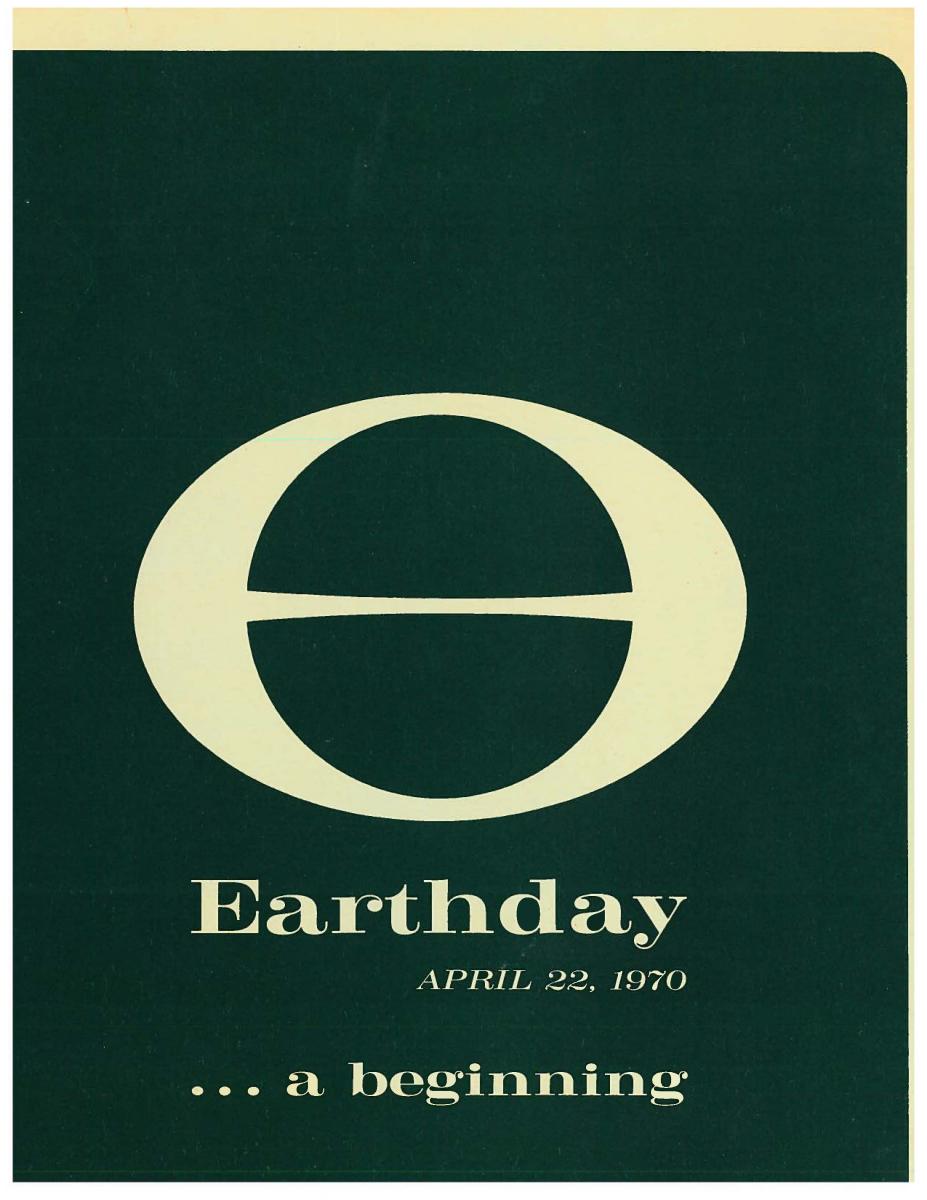 |
|
1970 |
U.S. Environmental Protection Agency established by President Richard Nixon to protect human health and safeguard the natural environment. |
|
|
1970 |
U.S. Clean Air Act passed. |
|
|
1971 |
OARDC Forestry Department was gifted Pomerene Forest Laboratory near Coshocton, Ohio for field research involving forest genetics, forest soils, forest ecology, tree physiology, tree nutrition and applied silviculture. |
|
|
1972 |
Congress passed the Clean Water Act, which limits pollutants in rivers, lakes and streams. |
|
|
1973 |
Congress passed the Endangered Species Act to protect animals and their ecosystems. |
|
|
1976 |
Congress passed the Toxic Substances Control Act to address the production, importation, use, and disposal of specific chemicals including polychlorinated biphenyls (PCBs), asbestos, radon and lead-based paint. |
|
|
1980 |
Chadwick Arboretum established. |
|
|
1991 |
Center for Automotive Research established and is now an internationally recognized research hub in sustainable and safe mobility. |
|
|
1992 |
Wilma H. Schiemeier Olentangy River Wetland Research Park groundbreaking held north of the Columbus campus. |
|
|
2007 |
Conversion of McCracken Power Plant from coal-fired to natural-gas fired. Huge impact to carbon emissions and overall air pollution. |
|
|
2008 |
Ohio State becomes signatory to Presidents' Climate Leadership Commitment, establishing our goal to achieve carbon neutrality by 2050, thereby creating the university's first formal sustainability goal. |
|
|
2008 |
Nationwide and Ohio Farm Bureau 4-H Center dedicated and certified as the first LEED building on campus. |
|
|
2010 |
University established the Ohio State Sustainability Fund to support projects that improve campus operations and lead to increased learning and innovation or more sustainable behaviors in the university community. As of today, the Sustainability Fundhas awarded more than $10 million in grants. |
|
|
2010 |
Electric vehicle charging stations installed on Columbus campus. |
|
|
2011 |
Ohio State's campus has been recognized for 9 years as Tree Campus USA, a nationwide program sponsored by Arbor Day Foundation. |
|
|
2011 |
Ohio Stadium has diverted a total of 857 tons of waste away from the landfill since Zero Waste at Ohio Stadium began in 2011. As one of the largest stadiums in the country to continuously achieve zero waste status by diverting on average 90% of waste away from the landfill, Ohio State was named Big 10 Diversion Rate Champion from 2012-2019 in the annual Game Day Recycling Challenge. |
|
|
2012 |
Environmental Professionals Network (EPN), a statewide professional group, established. |
|
|
2012 |
Environment, Economy, Development and Sustainability (EEDS) major established in the School of Environment and Natural Resources. |
|
|
2012 |
The Olentangy River Fifth Avenue dam was removed to improve water and stream habitat quality. |
|
|
2012 |
Solar panels installed on the roof of the Stone Lab’s classroom building and in the solar pavilion. They now provide 10-25% of Gibraltar Island’s electricity needs. |
|
|
2012 |
Ohio State purchased 50 megawatts of wind energy capacity from the Blue Creek Wind Farmin Ohio. |
|
|
2013 |
Ohio State installed 411 geothermal wells to heat and cool south campus residence halls. The system now provides about 90% of the heating needs (on an annual basis) and 100% of the cooling needs of south campus residence halls. |
|
|
2013 |
A 12,000-square-foot green roof created at Howlett Hall, diverting 200,000 gallons of stormwater runoff each year, reducing utility costs in the summer, lengthens the lifespan of the roof and increases green space in the urban landscape. |
|
|
2014 |
In 2014 in collaboration with AEP energy, a solar array in the shape of a “Block O” was installed on the Recreation and Physical Activity Center. These panels produce an estimated 116,000 kilowatt-hours of energy per year. |
|
|
2014 |
The Ohio State University at Marion and Marion Technical College were certified as Ohio’s First Zero Waste Campus. |
|
|
2014 |
Researchers in chemistry and biochemistry succeeded in combining a battery and a solar cell into one hybrid device, thus developing the world’s first solar battery. |
|
|
2014 |
The Harmful Algal Bloom Research Initiative created in the aftermath of the 2014 Toledo water crisis. Led by Ohio State and the University of Toledo, and managed by Ohio Sea Grant, this initiative allows for research and solutions to the challenges surrounding the Lake Erie algal blooms. |
|
|
2014 |
SUSTAINS (Students Understanding Sustainability and Taking Action to Improve Nature and Society) learning community established. |
|
|
2015 |
Ohio State University Sustainability Goals developed to reflect the university’s core goals of teaching and learning, research and innovation, outreach and engagement and resource stewardship. |
|
|
2016 |
The Global Water Institute established to use knowledge and technology to assist the billions of people around the world who suffer from poor access to water, sanitation and hygiene. |
|
|
2016 |
Ohio State’s Columbus campus achieved a gold rating within the Sustainability Tracking, Assessment & Rating System (STARS) for the first time. A silver rating was achieved in 2012 and a gold rating was also achieved in 2019. Ohio State received high marks in academic and water management categories and in categories including energy, buildings, transportation and waste diversion. |
|
|
2017 |
Ohio State Marion's Science and Engineering Building adds 30,000 kilowatt hour rooftop solar array. |
|
|
2017 |
Ohio State installed a compressed natural gas (CNG) fueling station to support sustainable transportation solutions for the 22 CABS buses converted to use CNG fuel. |
|
|
2017 |
The university entered into a 50-year partnership with Ohio State Energy Partners to improve its energy management and meet university sustainability goals, transferring management of the systems that heat, cool and power the Columbus campus to ENGIE Buckeye Operations. |
|
|
2017 |
Ohio State Lima restored 19 acres of tall grass prairie to help the ecosystem for bees, butterflies and insects, as well as encourage research. |
|
|
2018 |
Ohio State completed the restoration of Mirror Lake to a more natural and sustainable condition that improved storm water management, reduced chemical water treatments and increased biodiversity. |
|
|
2018 |
Ohio State University Wexner Medical Center formed the Greening the Operating RoomTask Force to introduce sustainable practices in operating rooms and to identify ways to scale up existing initiatives. |
|
|
2018 |
Ohio State set the goal to increase the amount and performance of its available greenspace while creating new living lab student learning and research opportunities, by 2025. |
|
|
2018 |
ENGIE began installing more than 375 smart meters in university buildings to monitor and control energy usage in real time. |
|
|
2019 |
The Sustainability Institute at Ohio State launched. |
|
|
2019 |
The Ohio State Energy Partners (OSEP) funded the Smart Campus Challenge, a venture capitalist-style student sustainability competition in February 2019. The winning project, Wasted Opportunities, is improving food recovery and food access on campus and the Columbus community. |
|
|
2019 |
Ohio State approved a report detailing how to reach 40% local and sustainable food at the campus dining location by 2025. |
|
|
2019 |
The Ohio State Wexner Medical Center won the 2019 John Chapman Award for Environmental Leadership from the Ohio Hospital Association. |
|
|
2019 |
Ohio State’s Columbus campus achieved a gold rating within the Sustainability Tracking, Assessment & Rating System (STARS), receiving high marks in academic and water management categories and in categories including energy, buildings, transportation and waste diversion. |
|
|
2019 |
A microfarm project launched at Ohio State Mansfield. This urban sustainable food-system produces and sells enough fresh produce to become a fully sustainable economic driver in the Mansfield-area economy. |
|
|
2019 |
Ohio State joined the U.S. chapter of the Sustainable Development Solutions Network, a United Nations initiative to help solve global challenges related to poverty, inequality, climate, environmental degradation, prosperity, and peace and justice. |
|
|
|
|
|
|
|
|
|

